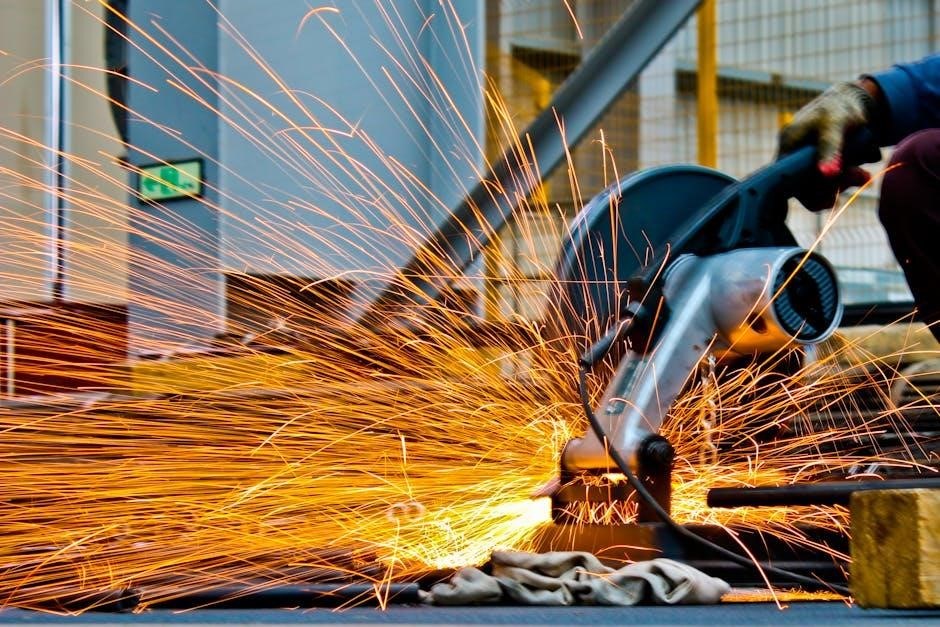The textbook is a cornerstone in engineering education, offering comprehensive coverage of heat and mass transfer principles through detailed examples and exercises, essential for students and professionals alike in understanding energy and environmental applications.
1.1 What and How?

Heat and mass transfer are fundamental processes in engineering, involving the movement of energy and substances. Heat transfer occurs through conduction, convection, and radiation, while mass transfer involves the movement of materials due to concentration gradients. These principles are essential in designing systems like heat exchangers and understanding energy conservation. The textbook provides a detailed introduction, explaining core concepts and their applications in various fields, making it a vital resource for students and professionals seeking to master these foundational engineering topics.
1.2 Physical Origins and Rate Equations
Physical origins of heat and mass transfer are rooted in molecular interactions and energy exchange. Conduction arises from direct molecular contact, while convection involves fluid motion. Radiation relies on electromagnetic waves. Rate equations quantify these processes, with Fourier’s Law governing conduction and Newton’s Law of Cooling for convection. Fick’s Law applies to mass transfer. These equations form the basis for analyzing and designing systems, emphasizing the importance of understanding their derivation and application in engineering problems.
Modes of Heat Transfer
Heat transfer occurs through conduction, convection, and radiation. These modes are fundamental in engineering, involving energy exchange between materials or systems, essential for designing efficient thermal processes.
2.1 Conduction
Conduction is the transfer of heat through a solid material or stationary fluid without macroscopic motion of the medium. It occurs due to the vibration of molecules and the movement of free electrons. Fourier’s Law of Conduction describes the heat flux as proportional to the temperature gradient. This mode is crucial in solids, where it often dominates over convection and radiation. Understanding conduction is vital for designing thermal insulations, electronic cooling systems, and high-temperature applications. The thermal conductivity of materials plays a key role in determining the rate of heat transfer.
2.2 Convection
Convection involves heat transfer through a moving fluid, where energy is transported by the motion of the fluid itself. It occurs in two forms: natural convection, driven by buoyancy forces due to temperature differences, and forced convection, where fluid motion is induced by external means like pumps or fans. The rate of convective heat transfer depends on factors such as fluid velocity, viscosity, and the thermal boundary layer. Newton’s Law of Cooling is commonly used to describe convective heat transfer, emphasizing the role of the convection coefficient and temperature difference. This mode is essential in applications like heat exchangers and cooling systems.
2.3 Radiation

Radiation is the transfer of heat through electromagnetic waves, independent of a medium. It occurs in all directions and can take place in a vacuum. The Stefan-Boltzmann Law describes the rate of radiant energy transfer, proportional to the fourth power of the temperature difference. Emissivity and view factors are critical parameters, influencing how effectively surfaces emit and absorb thermal radiation. Radiation is significant in high-temperature processes, space exploration, and thermal insulation systems, making it a fundamental aspect of heat transfer analysis in both industrial and natural environments.

Mass Transfer Fundamentals
Mass transfer involves the movement of mass driven by concentration gradients, essential in processes like diffusion, convection, and chemical reactions. It is governed by Fick’s Laws, analogous to heat transfer, ensuring conservation of mass in systems. This principle is vital in engineering applications, environmental studies, and industrial processes, where accurate predictions of mass flow are critical for system design and efficiency.
3.1 The Conservation of Energy Requirement
The conservation of energy is a fundamental principle in heat and mass transfer, ensuring energy is neither created nor destroyed within a system. For a control volume, energy inflows and outflows must balance, accounting for work and heat transfer. This principle is crucial for analyzing steady-state conditions, where energy generation equals energy fluxes. It applies universally, forming the basis for deriving rate equations in conduction, convection, and radiation. Proper application ensures accurate modeling of thermal systems, linking heat transfer to thermodynamic laws and practical engineering solutions.
3.2 The Surface Energy Balance

The surface energy balance is a critical concept in heat and mass transfer, describing the equilibrium of energy fluxes at a surface. It accounts for all forms of energy exchange, including conduction, convection, and radiation. For a surface, the sum of heat transfer rates must equal the energy generated or stored. This principle is essential for analyzing boundaries in thermal systems, ensuring consistency with thermodynamic laws. It applies to diverse engineering scenarios, from heat exchangers to biological systems, providing a framework to solve complex energy transfer problems accurately and efficiently.

Applications of Heat and Mass Transfer
Heat and mass transfer are essential in various engineering applications, including heat exchangers, evaporative cooling, and thermal management in electronics. These technologies enhance energy efficiency and environmental sustainability.
4.1 Heat Exchangers
Heat exchangers are devices that enable the transfer of heat between two or more fluids at different temperatures, separated by a solid wall. They are widely used in power generation, refrigeration, and industrial processes to enhance energy efficiency. Common types include shell-and-tube, plate-and-frame, and air-cooled designs. Heat exchangers rely on convection and conduction to facilitate thermal energy exchange. Proper design ensures minimal pressure drop and maximum heat transfer, making them critical components in maintaining system performance and operational efficiency across various engineering applications.
4.2 Evaporative Cooling
Evaporative cooling is a process where a liquid evaporates into a gas, absorbing heat from its surroundings. This method is widely used in cooling towers, evaporative condensers, and direct-contact systems. It relies on the principles of convection and mass transfer to efficiently lower temperatures. Evaporative cooling systems are energy-efficient and environmentally friendly, making them ideal for industrial and HVAC applications. They operate by circulating water through a medium, allowing evaporation to cool the fluid, and are particularly effective in dry climates due to their ability to enhance heat rejection. This technique is essential for maintaining thermal balance in various engineering systems.
Heat and Mass Transfer Analogy
The analogy between heat and mass transfer highlights their similarity, as both involve transfer due to potential differences. This relationship aids in solving engineering problems efficiently.
5.1 The Heat and Mass Transfer Analogy

The analogy between heat and mass transfer reveals their fundamental similarity, as both processes involve diffusion driven by potential differences. Heat transfer is governed by temperature gradients, while mass transfer is driven by concentration gradients. This similarity allows engineers to apply analogous equations and methods to solve problems in both domains. For instance, Fourier’s Law of conduction and Fick’s Law of diffusion share a mathematical structure, enabling cross-disciplinary insights. Understanding this analogy enhances problem-solving efficiency in engineering applications, such as evaporative cooling and drying processes, where heat and mass transfer occur simultaneously.

Key Equations and Problem-Solving Methods
Foundational equations like Fourier’s Law and Newton’s Law of Cooling are essential for analyzing conduction and convection. These principles guide practical problem-solving in engineering applications effectively.
6.1 Steady-State Heat Transfer
Steady-state heat transfer occurs when the temperature at any point in a system remains constant over time. This is governed by Fourier’s Law of Conduction, which relates heat flux to temperature gradients. For one-dimensional, steady-state conditions, the heat transfer rate can be modeled using thermal circuits, simplifying complex systems into resistances. These principles are fundamental for analyzing heat flow through plane walls, cylinders, and spheres, and are extensively applied in engineering design, including heat exchangers and insulation systems, to optimize thermal performance and energy efficiency.
The textbook is a comprehensive resource for understanding heat and mass transfer, offering detailed examples and exercises that emphasize energy and environmental applications.
7.1 Summary of Core Concepts

The textbook provides a thorough understanding of heat and mass transfer, covering conduction, convection, and radiation. It emphasizes energy conservation and surface energy balance, with practical applications in engineering. The material is supported by numerous exercises, examples, and illustrations, making complex concepts accessible. The 8th edition integrates recent research, focusing on energy efficiency and environmental impact. This resource is essential for students and professionals, offering a solid foundation in heat and mass transfer principles.